cardboard synthesizer with wooden keys runs on raspberry pi
Homemade synthesizer made with cardboard produces sounds through the series of handmade wooden keys shaped from walnut and oak. Designed by Gabriel Mejia-Estrella, the electronic device is a DIY project with two main electronic systems inside: a Teensy microcontroller and a Raspberry Pi 5. The body of the cardboard synthesizer with wooden keys comes from a mix of walnut wood, oak, and fiberglass. The walnut is used for the edges and black keys, while the oak is used for the white keys. The cardboard forms the top and bottom panels, while the fiberglass is used to reinforce these parts. The walnut pieces are steam-bent to shape the curved edges. To make the walnut flexible, thin cuts called kerfs are made before bending.
Then, a mold made of scrap wood holds the pieces in place while they cool and dry. Fiberglass cloth and epoxy resin are applied to the cardboard panels to make them robust for playing. Several layers of fiberglass are added, each one brushed with epoxy and left to harden before the next layer is applied. The result is a solid panel that supports the structure of the cardboard synthesizer with wooden keys. Metal plates are added to support the internal electronics, and these plates are aluminum, cut by a metal service and finished with anodizing for protection.
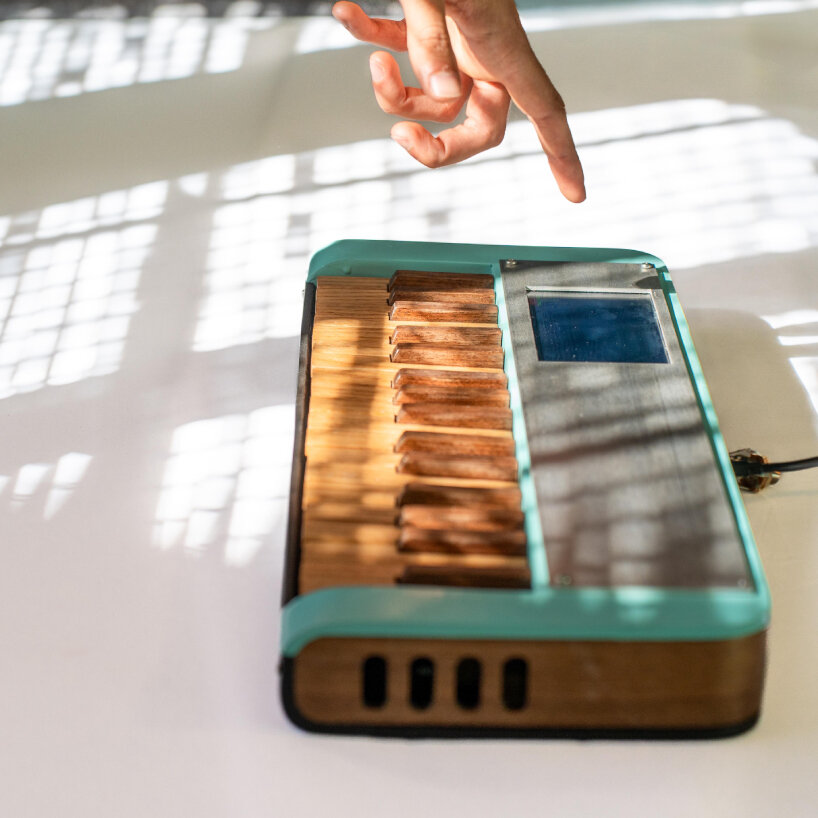
all images courtesy of Gabriel Mejia-Estrella
Homemade device painted in turquoise and matte black
Each of the keys is handmade, with the designer Gabriel Mejia-Estrella cutting, gluing, sanding, and drilling them one by one. A steel rod runs through all the keys to hold them in place, and springs under the keys allow them to return to their original position after being pressed. Each key has washers to space them evenly and a stop made from metal channels to limit their movement. Inside the cardboard synthesizer with wooden keys, the Teensy microcontroller detects when a key is pressed and sends a signal as a MIDI message to the Raspberry Pi. The latter runs an open-source music system called Zynthian, software that allows the synth to play sounds and use different effects. The Raspberry Pi connects to a touchscreen that acts as the main control panel.
Then, the software is downloaded and installed on a microSD card before being inserted into the board. Once powered, the system can load different virtual instruments and play them using the handmade keyboard. A sound card connects the instrument to speakers or headphones through a standard audio jack. The case of the cardboard synthesizer with wooden keys is finished with paint, with the top bearing the shade of turquoise and the bottom in matte black. The metal plates are screwed in place, and the panels are glued with epoxy. Rubber feet are added to keep the synth stable on a flat surface. So far, the designer has documented the making of his cardboard synthesizer with wooden keys, inviting viewers who are interested in making it to get started.

homemade synthesizer made with cardboard produces sounds through the handmade wooden keys
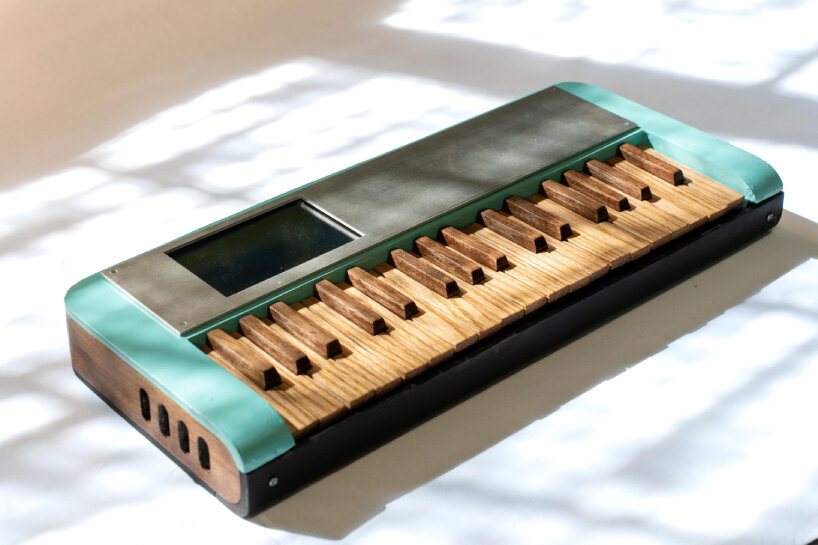
designed by Gabriel Mejia-Estrella, the electronic device is a DIY project
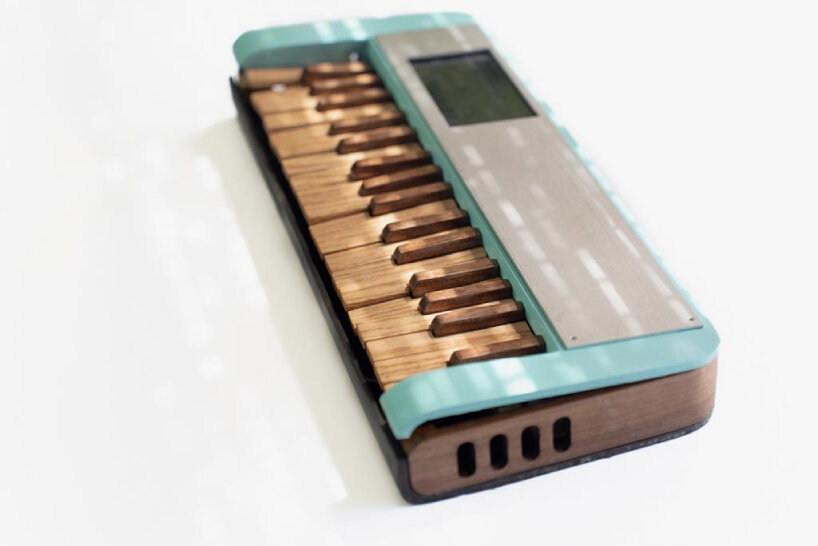
the body of the cardboard synthesizer with wooden keys comes from a mix of walnut wood, oak, and fiberglass

detailed view of the wooden body
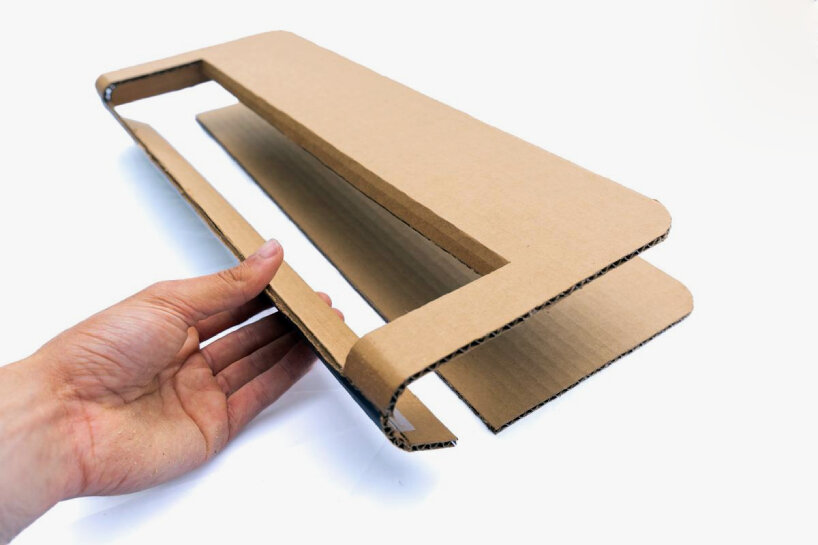
the cardboard forms the top and bottom panels
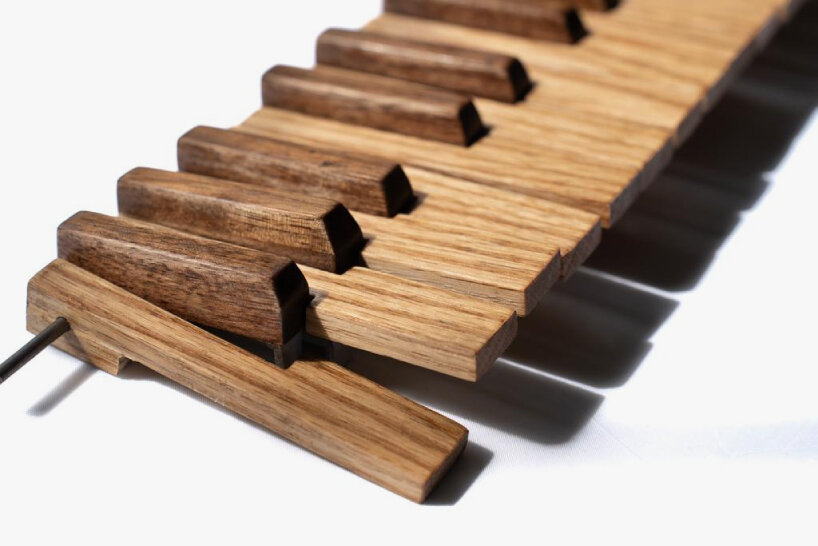
the walnut is used for the edges and black keys, while the oak is used for the white keys
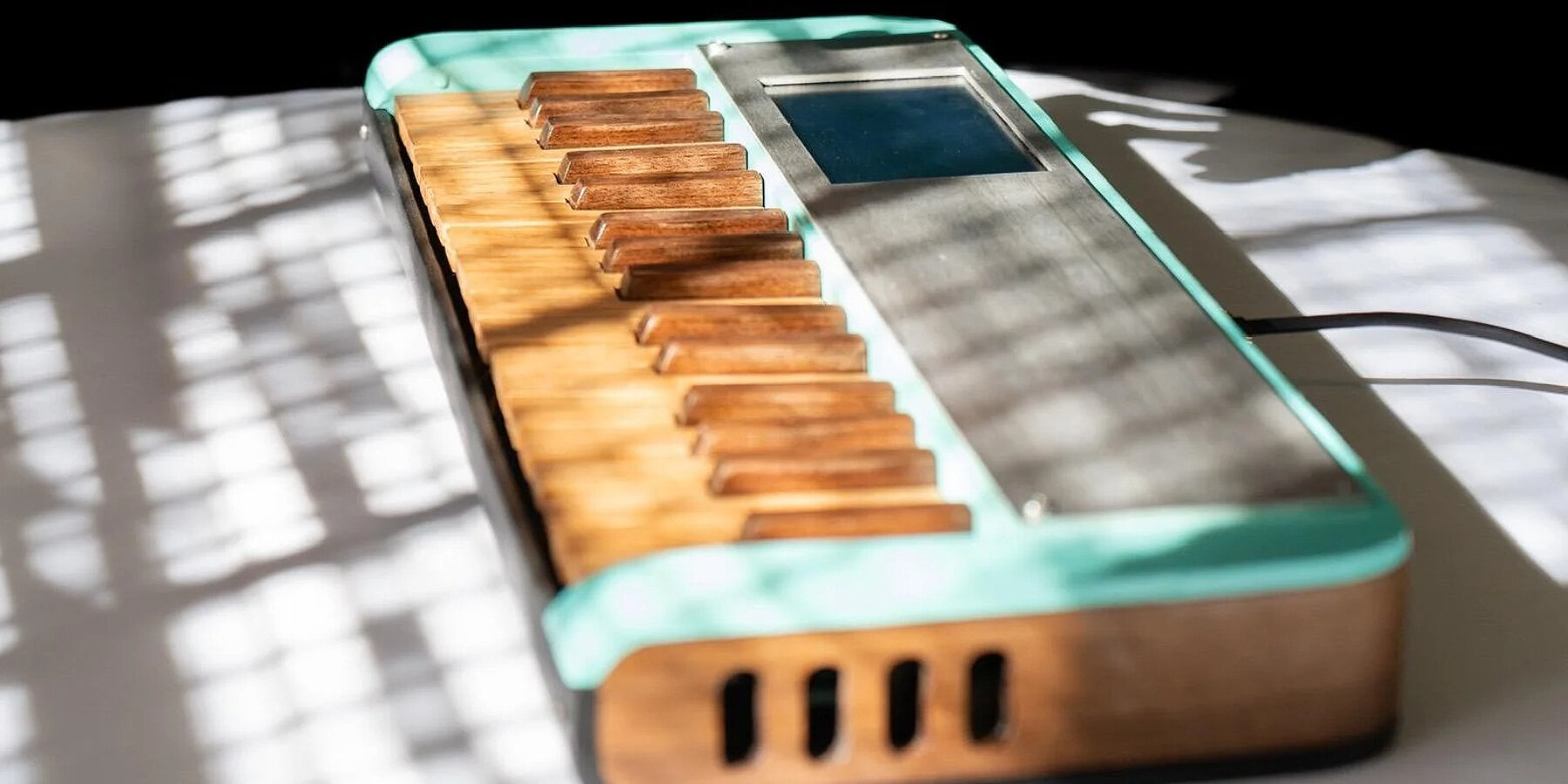
the walnut pieces are steam-bent to shape the curved edges
project info:
name: Synth with handmade wooden keys
design: Gabriel Mejia-Estrella | @gabriel.mejia.estrella
instructions: here
The post cardboard synthesizer plays sounds using handmade wooden keys cut from walnut and oak appeared first on designboom | architecture & design magazine.


